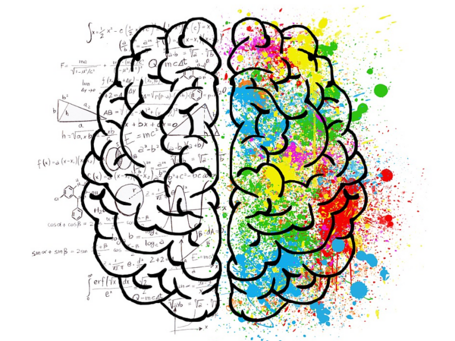Nowadays our clients are already digital clients, clients who search on Google and expect results in milliseconds, clients who shop at Amazon and expect their order to be delivered the following day, clients who do all of their banking online, clients who search for reviews before booking a hotel.
This digital costumer, who knows the advantages of digitalisation and is used to them, cannot be tricked any more. You cannot offer him a search engine that works worse that Google's, a shopping process slower that Amazon's, a bank that forces him to go into the office all the time or a hotel without a proper online service.
The problem is that, in this new digital environment, traditional companies feel completely lost, watching how their business, which had barely changed in the past few years, is threatened by recently created start-ups that are completely changing the rules of the game.
Well, in this context we can say that digital transformation means covering the gap between traditional companies and new digital consumers: A process of radical renovation at all levels, to operate in a more efficient manner, through a better use of new technologies and with new business models that take advantage of the new opportunities created thanks to digitalisation.

At Paradigma we have created our own method to tackle digital transformation: the DTMA. In the DTMA this process of digital transformation has three main goals: customer centric, omnichannel and data intelligence. Companies wishing to adapt themselves in order to achieve these objectives must implement changes along three lines of action: technology, culture-organisation and business.
The three objectives of the process of digital transformation
- % block:heading
- % text:Customer Centric
- % level:2
- % type:--h30-15-400
- % name:left
- % endblock
It is not just design and user experience, it is more than that. Technology has given the customer the control over his relationship with businesses. We are in the age of the customer.
To become a digital company it is necessary to go from an Inside-Out way of thinking to an Outside-In way, where the customer is an obsession. The adaptation of products and services to the needs of customers does no longer start by considering internal limitations. It starts by offering solutions that are relevant to people's lives, focussing outside, to then deal internally with the changes needed to make it a reality.
Theodore Levitt (ex-professor at Harvard Business School) said, ‘People do not want to buy a drill, they want to make a hole in the wall.’
Internet companies must be on constant watch to adapt to the digital customer as fast as he moves. Success means to know the customer better and to hyperpersonalise the offer with data intelligence through Big Data projects.
- % block:heading
- % text:Omnichannel
- % level:2
- % type:--h30-15-400
- % name:left
- % endblock
We live in an always-on society, where we cannot decide where a user who is going to consume our content comes from. So we need to offer all our operations and products through all channels, all of them integrated to allow the customer to change channel at any time in a natural, easy way, without interruptions.
Do you remember how years ago we were looking at the graphs that showed that connections from mobile phones were going to overtake those from a PC? Well, that moment has finally arrived, and because of that special focus is needed on the mobile channel.
The key to a true omnichannel experience, besides an excellent service design, is to have one platform which handles all the data from all channels in a unified way (Data Centric).
- % block:heading
- % text:Data intelligence
- % level:2
- % type:--h30-15-400
- % name:left
- % endblock
One of the main objectives of digital transformation is the improvement in decision making. This means first of all to become a data driven company, in order to become in the end a company that is able to obtain value from data in real time, to the point of being able to predict what is going to happen.
All the storage pockets in the company must be deleted in order to connect all the internal data with external data gathered from all available sources, thus eliminating duplicates and data inconsistencies.
Decisions, whether strategic, about products or services or about marketing campaigns, must not be taken on the basis of intuition. There must be a move towards intelligent decisions based on data or even to automatic decisions taken on the basis of the knowledge gathered from the data.

The three lines of change in a digital transformation process
- % block:heading
- % text:Technology
- % level:2
- % type:--h30-15-400
- % name:left
- % endblock
Technology must facilitate on going adaptation to the customer, with an optimal time to market. Technology must be renewed so that IT departments can service the business at the speed demanded by the Internet.
This goes through building an IT platform that allows quick failure and is affordable: based on opensource technologies, public or private in-Cloud developments, taking advantage of the new Big Data capabilities, everything automated in a Continuous Delivery strategy.
Digital transformation involves the replacement of proprietary products and closed technologies from providers such as Oracle, IBM or HP with opensource technologies which allow companies to get back control over their systems.
- % block:heading
- % text:Culture and organisation
- % level:2
- % type:--h30-15-400
- % name:left
- % endblock
Digital transformation goes well beyond technology. In fact, one of the main challenges of this transformation are people.
Company values, organisational model, talent scouting, an optimal workplace, transparency, self responsibility of the teams, quickness, etc.
It is also important that the company has the roles and profiles which are needed to compete digitally.
- % block:heading
- % text:Business
- % level:2
- % type:--h30-15-400
- % name:left
- % endblock
Digitalisation not only allows us to gain in efficiency, but also facilitates the creation of new businesses thanks to new digital technologies.
The focus on the client means to become an outside-in organisation, and an organisation with a clear obsession for their customers, able to adapt their products and services to the customers' needs using data intelligence.
In this line of action, apart from that stated above, topics such as the value proposal are evaluated, whether digital marketing models are operating or whether the right partners for the process can be counted upon.

To end...
Nowadays users move forward faster that businesses do, and this is only the beginning. If you watch a child handling a tablet you will immediately realise that new generations are going to be more and more demanding.
In this scenario everyone talks about digital transformation, but few can explain what it is about. Some think that it means growing a beard, buying a Mac and going to work in slippers. Others will tell you that it is a technological renovation through architectures of microservice and opensource technologies, others that it is about a better online presence…
Well, I hope I have been able to clarify the true reach of a digital transformation.
Comments are moderated and will only be visible if they add to the discussion in a constructive way. If you disagree with a point, please, be polite.





Tell us what you think.